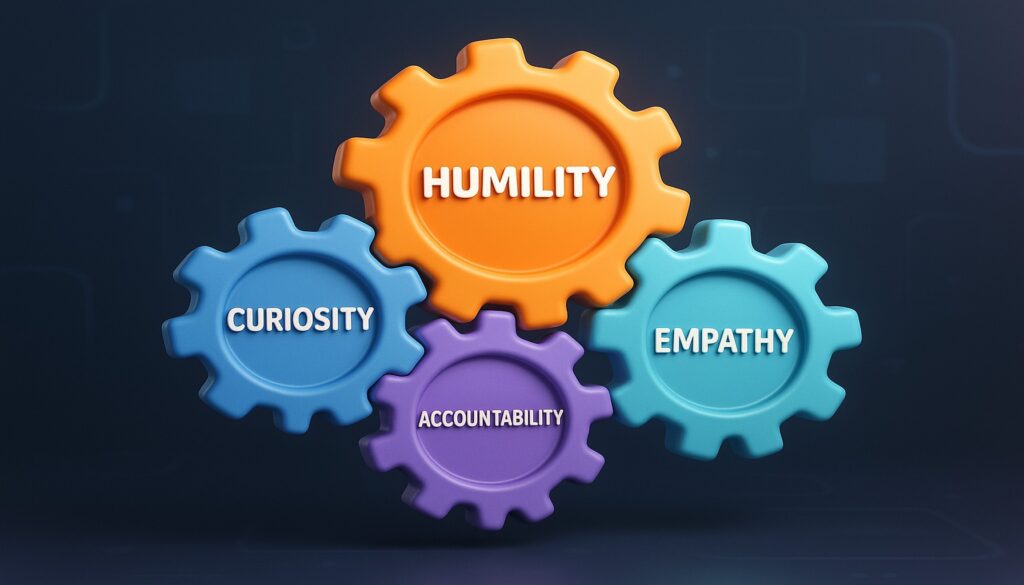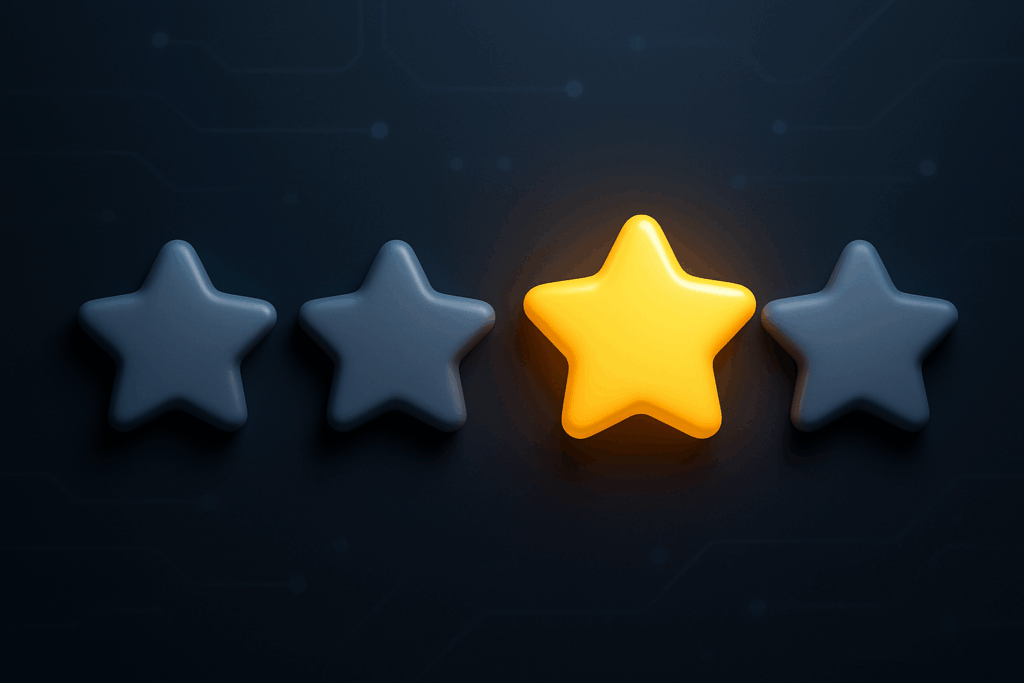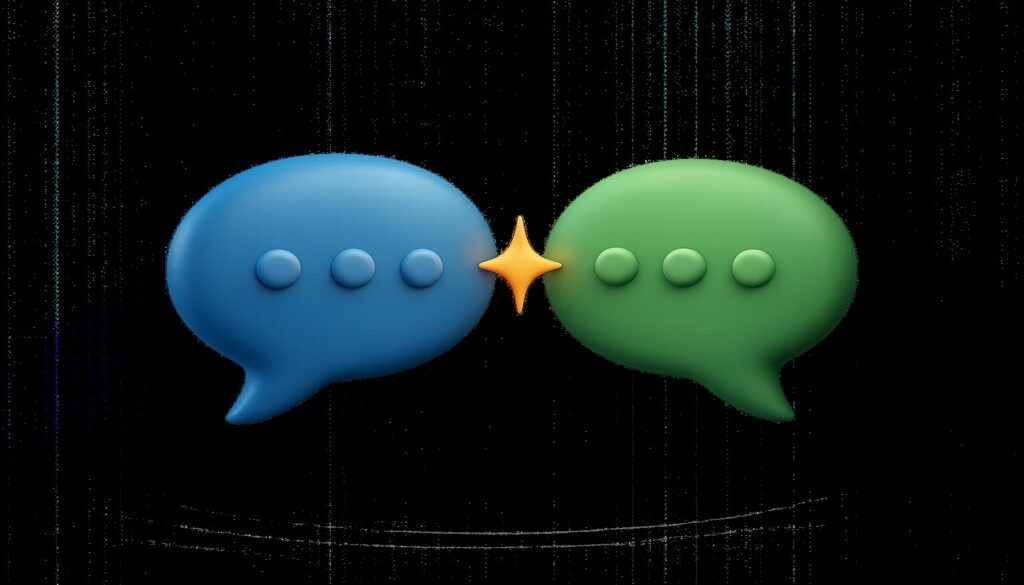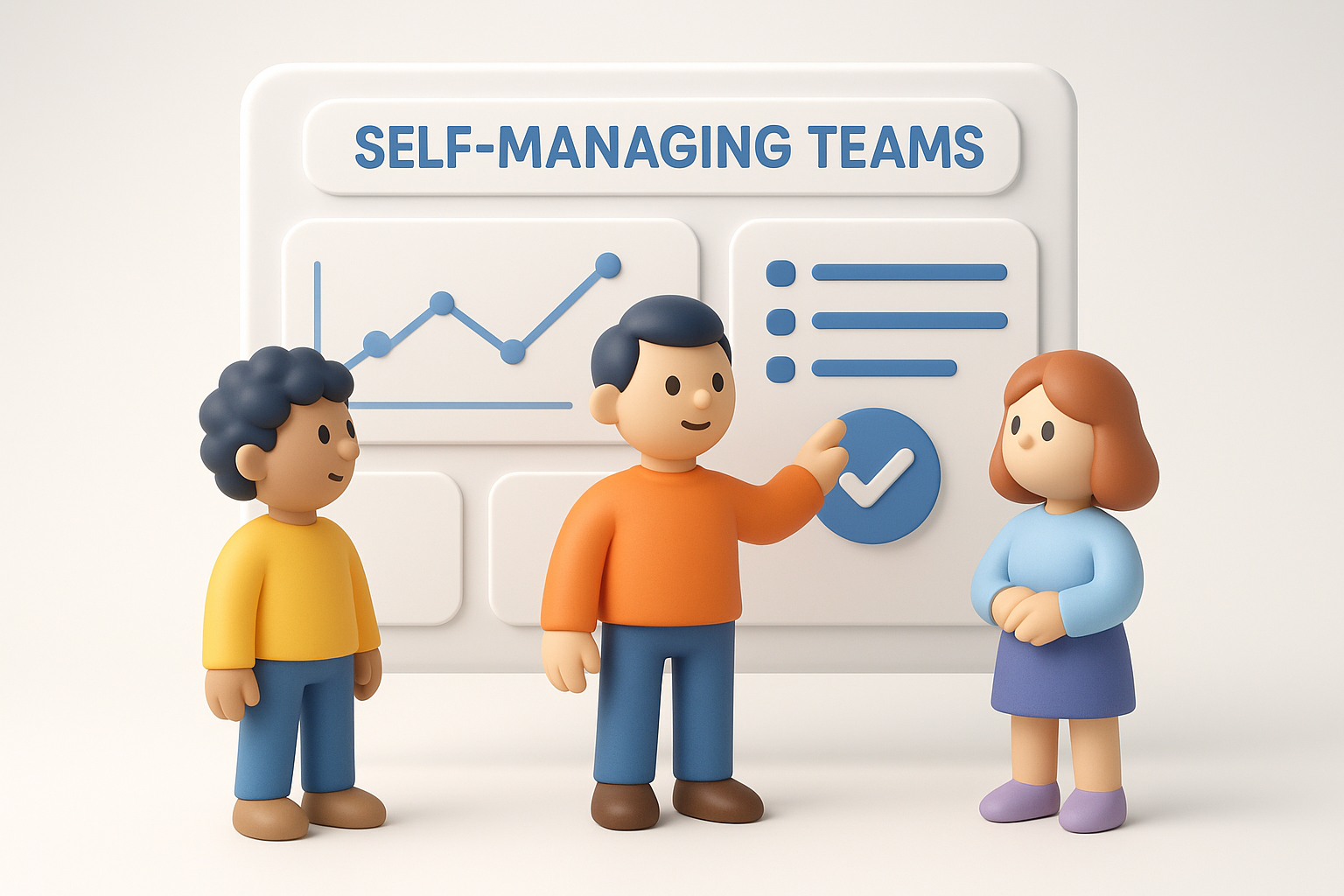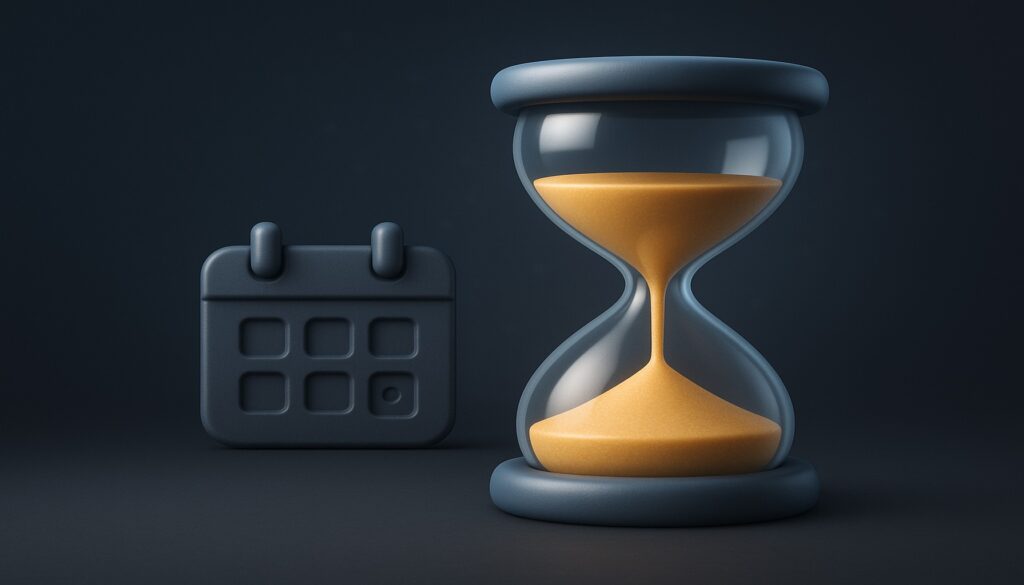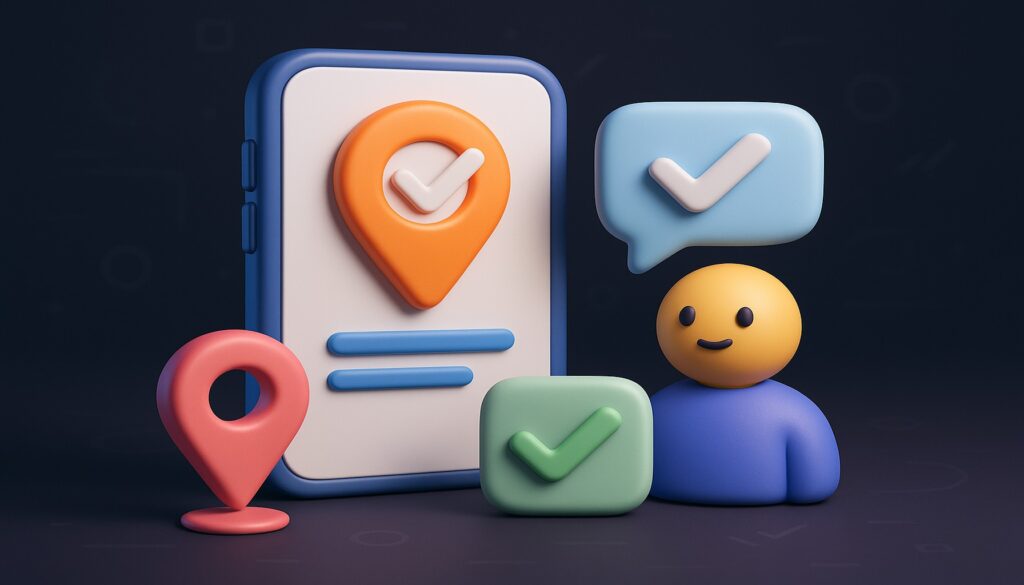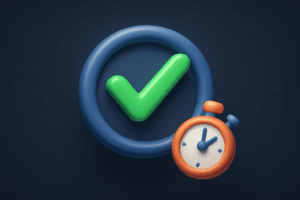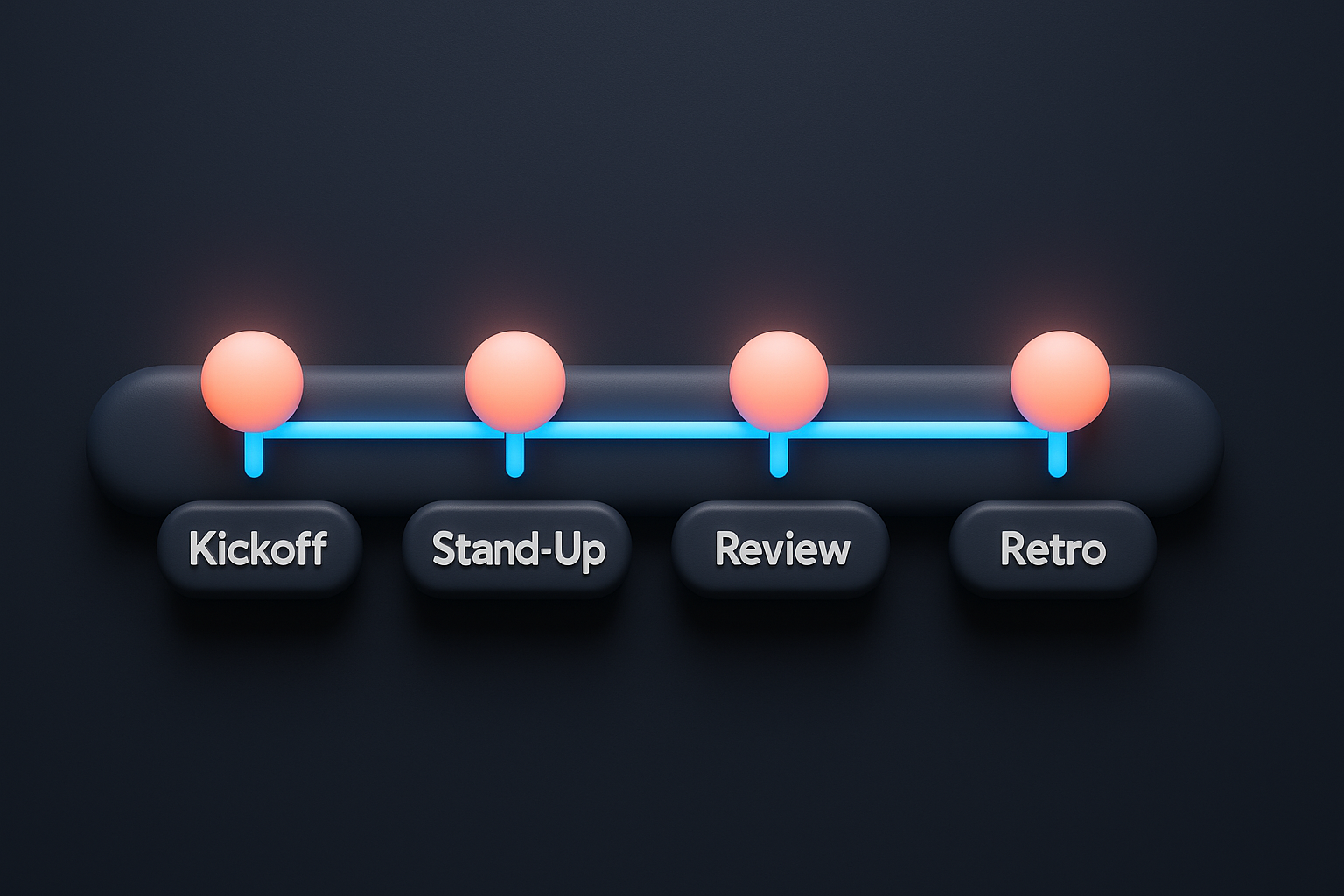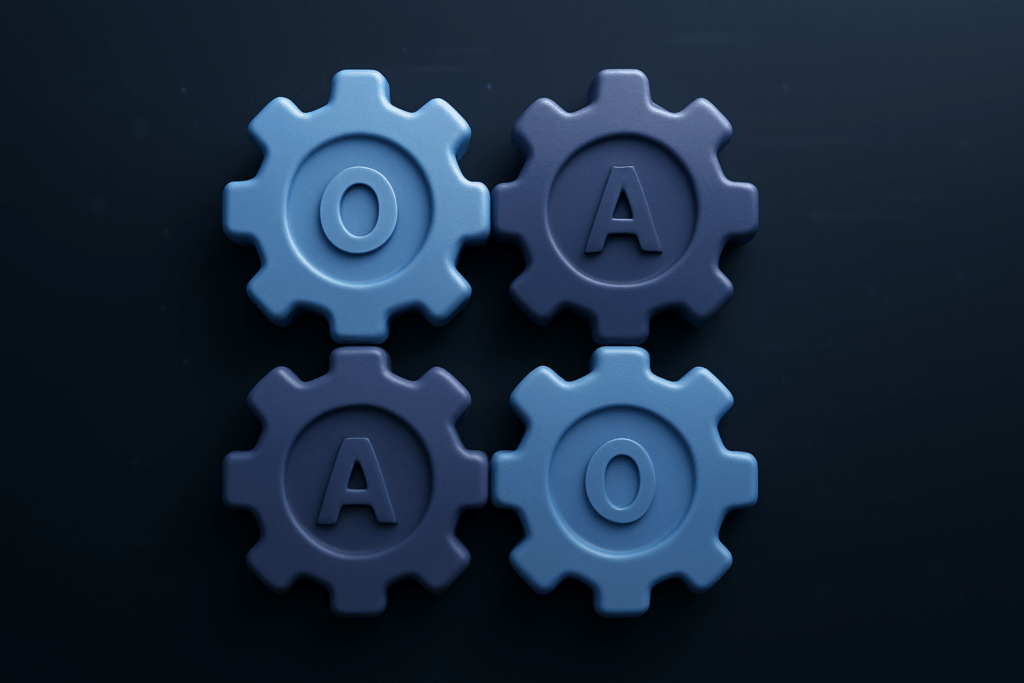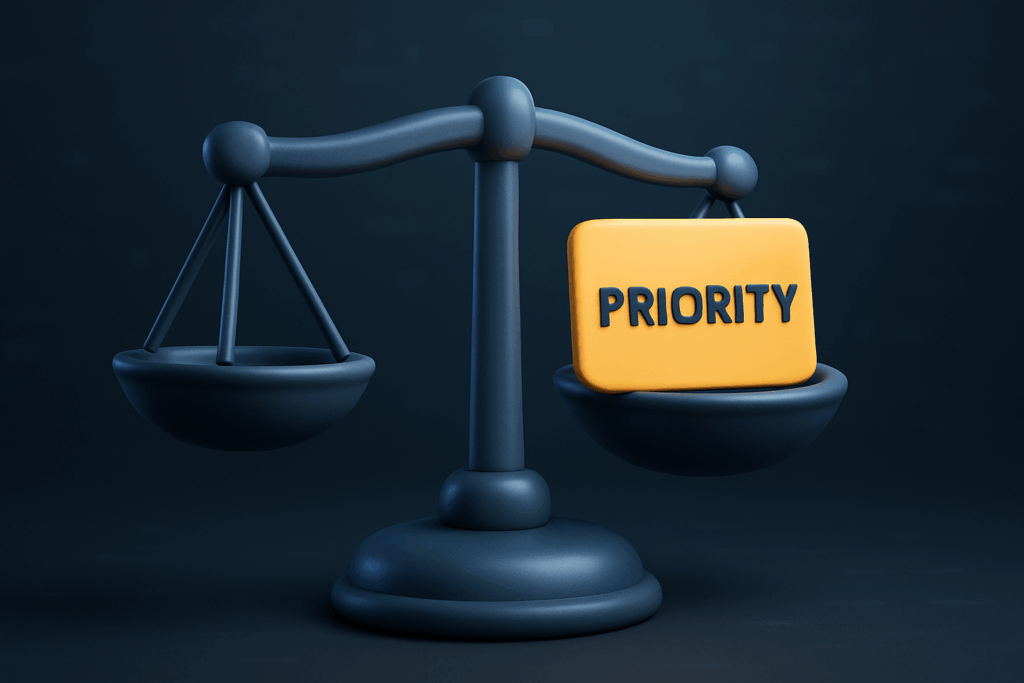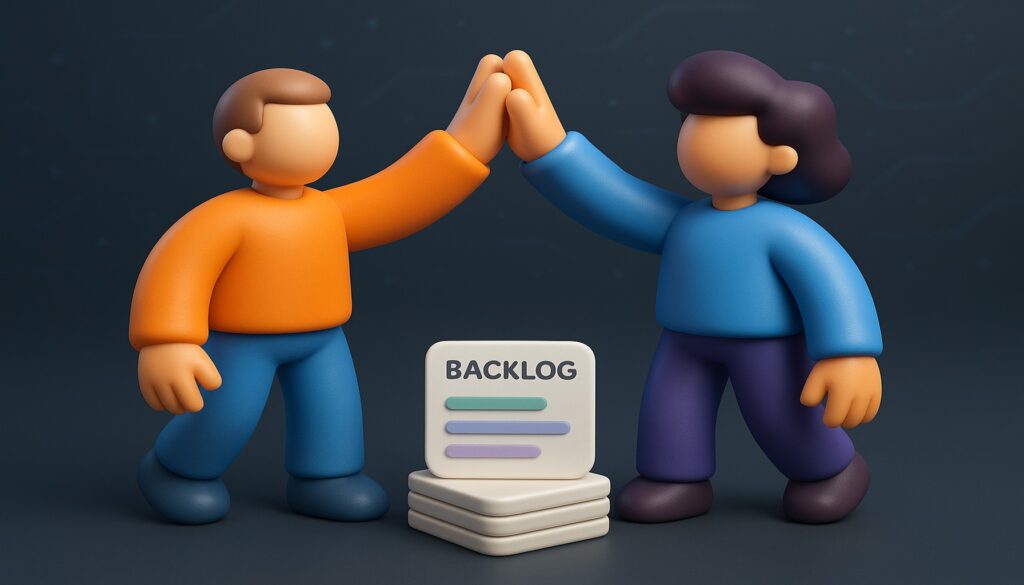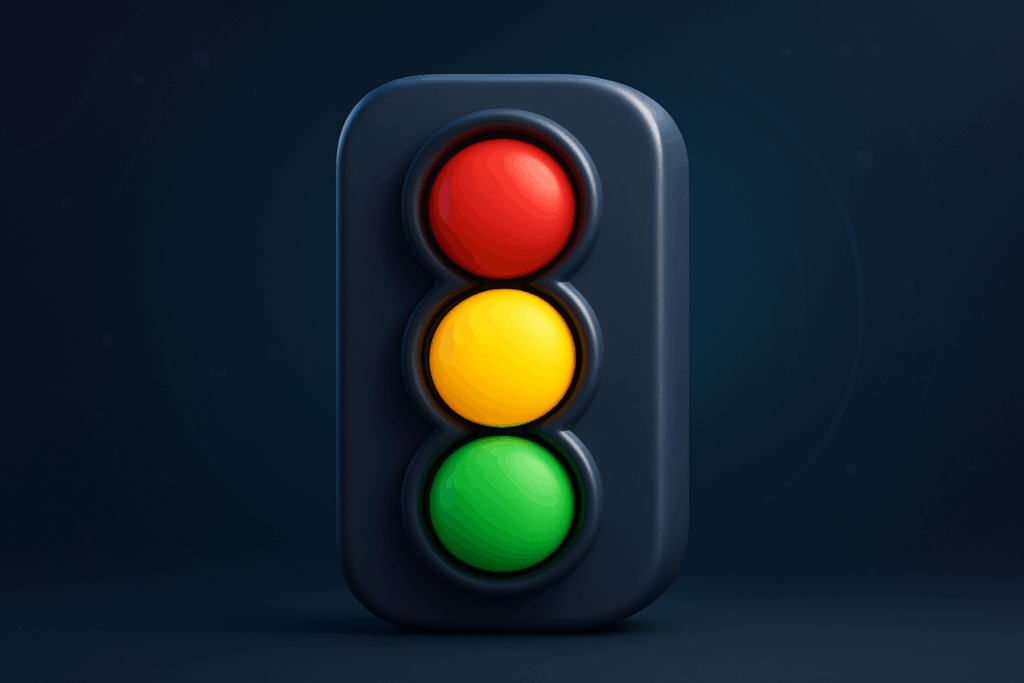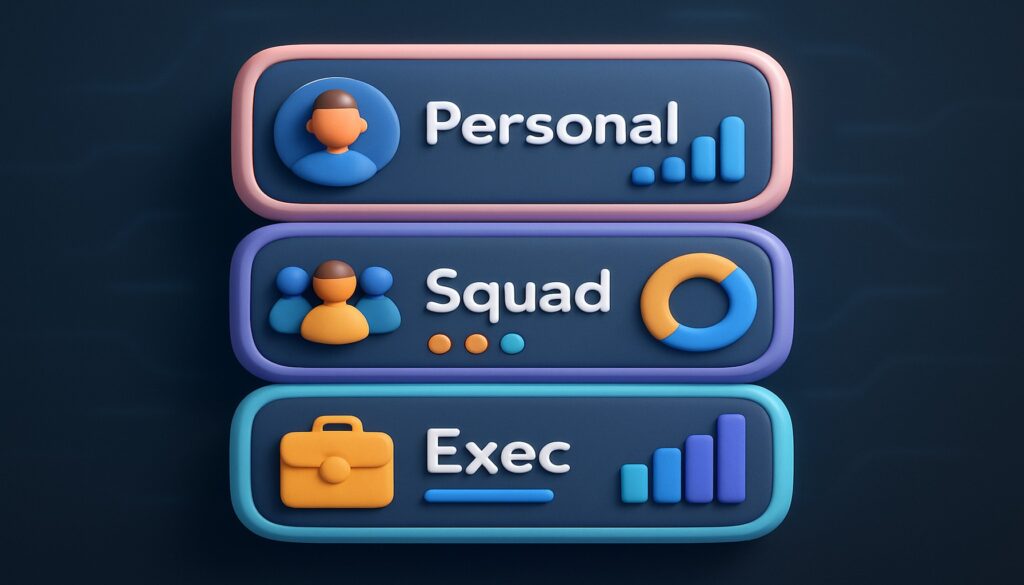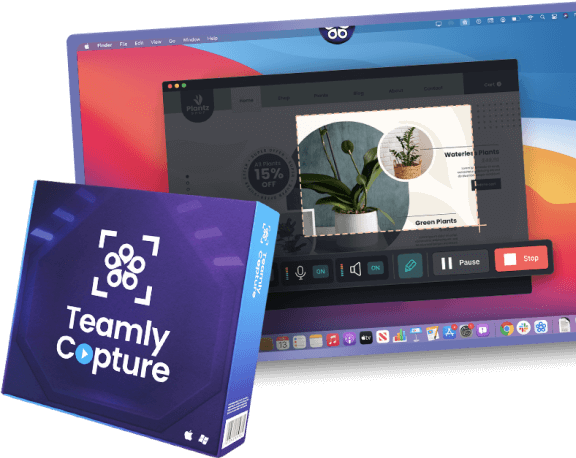You’ve got rock-star talent scattered across time zones, living rooms, and coworking nooks.
Hybrid looks ideal—people flex schedules yet still gather for white-board moments.
In practice? Silos sprout overnight, extroverts dominate Zoom, and the “remote” half of the company worries they’re sliding off the radar. Meetings multiply, morale dips, and culture feels like a group text that lost its vibe.
Good news: you don’t need Friday keggers or mandatory office days to fix it. What you do need is rhythm—lightweight rituals that pulse through the week, remind everyone they matter, and braid the team into one narrative.
Below you’ll find a playbook of scalable habits, drawn from distributed veterans, to keep your hybrid crew humming.

1. Daily Pulse: Five Minutes to Align, Energize, and Unclog
A pulse meeting should feel like hitting the hotel gym: quick, consistent, and confidence-boosting. Same time each weekday, agenda tattooed on everyone’s memory:
- Yesterday’s win: one sentence that sparks dopamine.
- Today’s priority: one sentence that clarifies focus.
- Roadblock: one sentence that invites fast rescue.
That’s 20 seconds per person. You’ll finish before espresso hits the cup. Record the roundup automatically with Teamly’s /daily command so folks in opposite hemispheres catch the beat without an alarm clock.
Why the Pulse Works
The ritual exposes invisible work, surfaces blockers early, and keeps micro-celebrations flowing. Over time, it rewires the group to think in days instead of nebulous “sprints,” shrinking procrastination windows.
Hot-Swap Variations
- Emoji-only Fridays: share mood + win in two emojis—rapid, playful.
- Threaded Tuesdays: skip the live call; everyone drops their pulse in chat before 10 a.m. local.

2. Asynchronous Show-and-Tell Thursday: Ship, Share, Shine
Every Thursday, teammates post a two-minute Loom, Figma link, or screenshot carousel of something they crafted, fixed, or learned. It’s the digital hallway you wish Slack channels were.
Starter Prompts
- Makers: Show the rough prototype—warts welcome.
- Marketers: Reveal an A/B test that flopped and why.
- Customer Success: Share a support macro that cut ticket time in half.
Block 30 minutes on calendars for everyone to binge the playlist. People comment with reactions, questions, or “could you drop the template?” requests. New hires devour months of tribal knowledge in a weekend.
Bonus Fuel
- Tag each clip with function + theme (
#design-insights). - Quarterly awards for “Most Useful,” “Most Courageous Learn,” and “Biggest Laugh.”
3. Digital Open-Office Hours: Spontaneity on Demand
Choose a two-hour block where leaders camp in a live video room, mics hot, doing regular work until someone pops in. No need for a calendar invite; drop the link in your chat status.
The hidden gem: Psychological safety skyrockets when questions cost two clicks instead of two days.
Keep It Flowing
- Cap drop-ins at ten minutes if a queue forms.
- Mix up time slots monthly to cover global colleagues.
- Never record—visits should feel casual, not evidence-gathering.
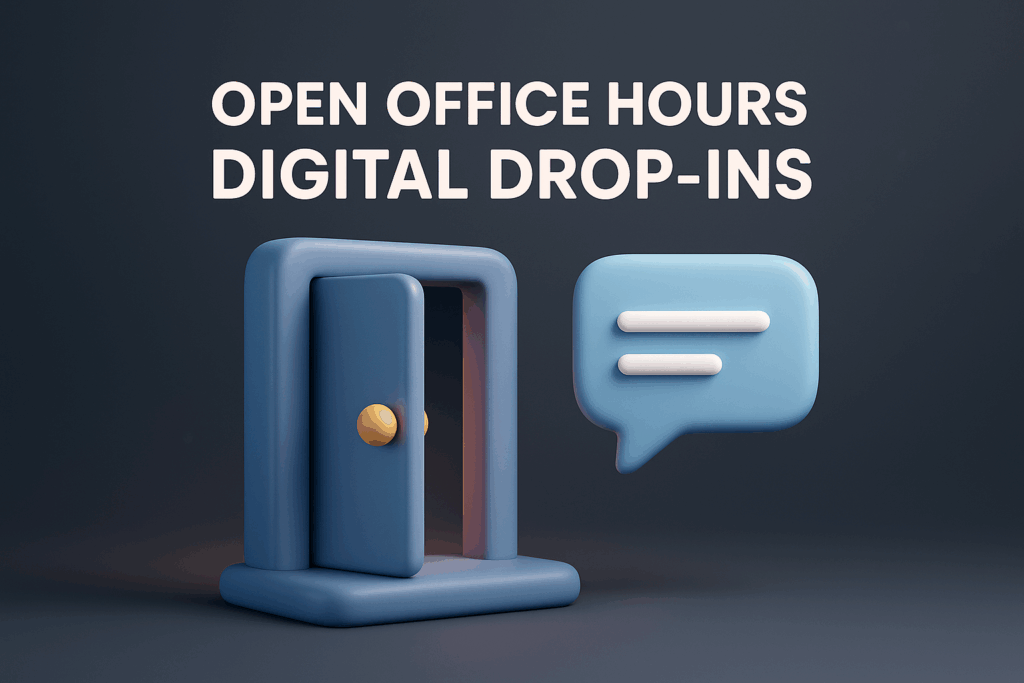
4. The Friday Snapshot: Retro, Recognition, Rhythm
Fridays often dissolve into distraction. Reclaim them with a three-part ritual:
- Flash Survey (60 seconds): What went well? Where did you get stuck? Who saved your bacon?
- Highlight Reel (5 slides): Ops lead curates standout metrics, moments, and memes.
- Emoji High-Five Storm: Colleagues rain gratitude in chat—yes, the praise is public.
Within weeks, you’ve built a searchable archive of progress plus a dopamine-rich feedback loop. Monday motivation becomes automatic.
Mini-Add-Ons
- Focus Playlist: One teammate drops a weekly Spotify mix that doubles as office soundtrack.
- Data Nugget: Analytics shares one chart that surprised them—learning in snack-size.

5. Burst Weeks: Quarterly IRL Energy Boost
Plan one week per quarter when everyone converges on an HQ or rotating city. Mornings = deep work in shared space; afternoons = strategy jams; evenings = tacos, trivia, escape rooms. The real value isn’t workshops—it’s serendipitous side talk that fuels the next 90 days.
Cost-Savvy Tactics
- Stipends over tickets: Let people hack cheaper routes or bundle personal trips.
- Neighborhood Airbnbs: Shared kitchens forge late-night brainstorms money can’t buy.
- One communal volunteer project: Packing food boxes bonds faster than karaoke.
6. Micro-Buddies & Co-Working Sprints
Pair teammates from different departments every month. They set a personal sprint goal Monday, DM mid-week for accountability, and share the win during Friday Snapshot.
Add optional two-hour “silent co-working” calls twice a week: cameras on, mics muted, background lo-fi. Motion in peripheral vision triggers focus—science backs it.
Metrics That Matter
- Cross-function questions answered: Track how many times buddies funnel answers outside their silo.
- Perceived loneliness score: A pulse-check scale from 1–5 drops ~20 % after eight weeks.

7. Randomized Coffee Chats (RCC)
Every fortnight, a bot pairs employees who haven’t spoken lately. They schedule a 15-minute video coffee and riff on anything but deliverables. Lighter connections strengthen the social web that keeps project work resilient.
Conversation Sparks
- “What hobby secretly makes you a better teammate?”
- “Show me a photo that sums up your week.”
- “If our product were a cocktail, what’s in it?”
8. Ritualized Learning Hour
Pick a same-time slot every other Wednesday. One person (rotating) teaches a bite-size skill: Postgres tips, inclusive language, Canva shortcuts. 20 minutes teaching, 10 minutes Q&A, done.
Collect recordings in a “Skill Share” channel so late joiners upskill on demand.
9. Silent Brainstorm Board: Ideas Without Interruptions
Before big decisions, open a doc for 48 hours. Anyone drops raw thoughts; no replies allowed. On day three, the decision owner clusters, then hosts a 30-minute call for discussion. This protects introverts, eliminates meeting sprawl, and surfaces quietly brilliant angles.
10. Celebration Calendar, Time-Zone Fair
Shared Google calendar tags every birthday, work anniversary, and launch. Pick two 15-minute windows: one friendly to APAC/EMEA, the other to the Americas. People show up to whichever matches their circadian rhythm and cheer with confetti GIFs. Nobody stays up at 2 a.m. for cake emojis again.
11. Culture Handbook Wiki—Written by Everyone
Static PDFs gather dust. A living wiki captures evolving norms. Embed GIF demos, add “Last changed by…” stamps, and a one-click suggestion box at the bottom. Review updates in the Friday Snapshot so policies never surprise.
12. Quarterly Ritual Audit
Great rituals age like milk if ignored. Each quarter, run a three-question survey:
- Which ritual feels stale?
- Which one fuels your week?
- One tweak to try next cycle?
Kill the draggy, amplify the energizing—culture as product management.
13. Well-Being Wednesdays
Every first Wednesday, the last meeting ends two hours early. People choose an energy-boost: yoga livestream, virtual art class, or simply logging off to hike. Optical effect? Productivity spikes Thursday because brains aren’t fried.
14. Async Hackathons
Pick a theme—“streamline onboarding,” “tiny automations”—and give teams 48 hours to build in asynchronous bursts. They deliver a two-minute demo video; the group votes with emoji. Winning idea moves straight to backlog with executive sponsor.
15. Theme Weeks
Inject novelty by naming a week: “Focus Week” (no internal meetings longer than 20 minutes) or “Kudos Week” (each person must deliver three unexpected thank-yous). Tiny constraints spark awareness and break auto-pilot.
Hybrid Harmony in Action
Hybrid culture isn’t a perk; it’s an operating system. Your toolkit is rhythm: bite-size rituals that spark connection, clarity, and celebration—no matter where laptops open. Start lean: a daily pulse and a Friday snapshot.
Layer on show-and-tell Thursdays, open-office hours, and quarterly Burst Weeks. Audit relentlessly. Iterate joyfully. And let logistics live inside tools like Teamly so your people can live inside the moments that matter.



